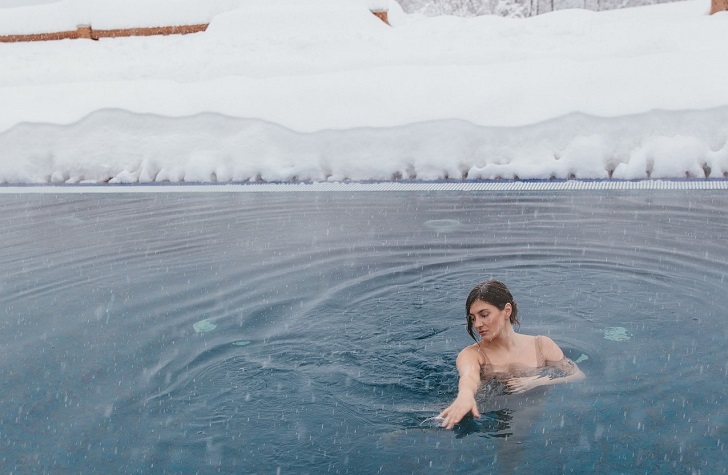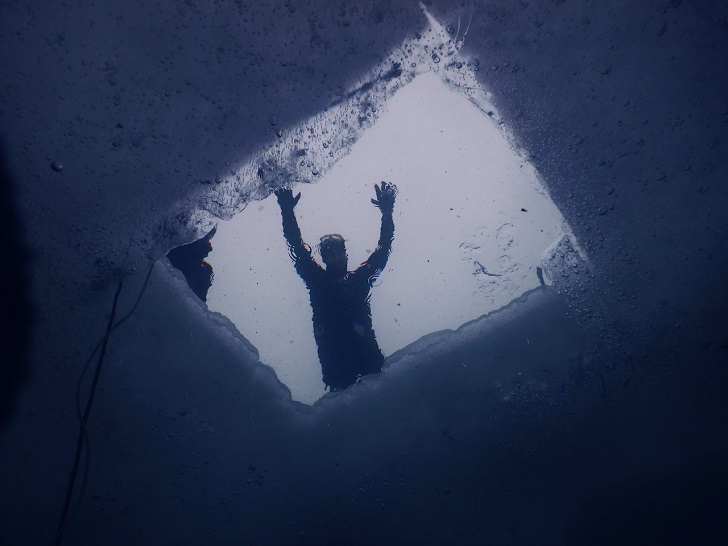When the temperatures drop, and the water turns icy, some brave souls embrace the chill and plunge into cold water for a refreshing and invigorating swim. Swimming in cold water can be an exhilarating experience that offers a unique connection with nature.
However, it also presents some challenges and risks that must be managed. This article will explore the benefits of cold-water swimming and provide essential tips and techniques to make your cold-water swims safe and enjoyable.
The Benefits of Cold-Water Swimming
- Boosted Immune System: Cold-water swimming is believed to stimulate the production of white blood cells, which can help strengthen your immune system. Regular exposure to cold water may make you more resilient to common illnesses.
- Enhanced Mood: The shock of cold water triggers the release of endorphins, the body’s natural mood enhancers. Many cold-water swimmers report feeling happier and more relaxed after a chilly swim.
- Improved Circulation: Cold-water swimming can increase blood circulation and improve cardiovascular health. The cold water causes your blood vessels to constrict, forcing your heart to work harder, which can help strengthen it over time.
- Increased Metabolism: Swimming in cold water can boost your metabolism, helping you burn more calories and potentially aid in weight management.
- Stress Reduction: Cold water can calm the nervous system, reducing stress and anxiety. It’s a natural form of mindfulness that can help you relax and clear your mind.
Now that you know the potential benefits, let’s dive into how to swim in cold water safely and effectively.

Yaroslav Shuraev/ Pexels | In cold water, we find clarity, both in the water and in our minds.
Choose the Right Location
Selecting the right location for your cold-water swim is crucial. Look for clean, safe bodies of water like lakes, rivers, or dedicated open-water swimming spots. Avoid swimming in unfamiliar or potentially dangerous areas, and always check local advisories or warnings before entering the water.
Know the Water Temperature
Before you take the plunge, know the water temperature. A water temperature below 50°F (10°C) is considered very cold, and extreme caution is required. Cold water can shock your system, so it’s essential to acclimate gradually.
Acclimate Gradually
Acclimating to cold water is essential to avoid the shock that can lead to cold water shock, which can be life-threatening. Start with short dips or swims in slightly cooler water and gradually build up to longer sessions in colder temperatures. Your body will adapt over time.
Dress Appropriately
Wearing the right gear is crucial for cold-water swimming. Invest in a good-quality wetsuit designed for cold water, and consider additional neoprene accessories like gloves, booties, and a cap to minimize heat loss. A swim cap can also help keep your ears warm and protect them from the cold.

SHVETS production/ Pexels | Wetsuits are not just for warmth; they provide buoyancy and help swimmers stay afloat.
Safety First
Never swim alone in cold water. Always have a swim buddy or someone onshore to watch over you. Additionally, ensure someone knows your swim plan, including your intended route and estimated duration.
Warm-Up Before You Swim
Before diving in, do light exercises or stretches to warm up your muscles. This will help prevent cramping and make your swim more comfortable.
Entry and Exit Carefully
When entering the water, take it slow. Walk in gradually to allow your body to adjust to the temperature. When exiting, move quickly to get out of the cold water and into a warm environment. Have warm clothing and towels ready to wrap yourself in when you’re out.
Controlled Breathing
Control your breathing when you enter cold water. Slow, deep breaths will help you relax and adapt to the shock. Avoid gasping for air, as this can lead to hyperventilation.

Svetlana Obysova/ Pexels | Your comfort zone ends where the cold water begins
Swim Slowly and Stay Close to the Shore
In cold water, your body will cool down faster than in warm water. Swim slower than you would in warmer conditions and stay relatively close to the shore. This allows for quick and easy access to warmth if needed.
Listen to Your Body
Pay close attention to how your body feels during the swim. If you start shivering uncontrollably, experience numbness, or feel extremely tired, it’s time to get out of the water and warm up immediately.
Post-Swim Warm-Up
After your cold-water swim, it’s crucial to warm up properly. Change into dry, warm clothing and sip on a warm beverage like herbal tea or hot chocolate. This will help raise your core body temperature and prevent afterdrop, a condition where your body temperature continues to drop after leaving the cold water.
